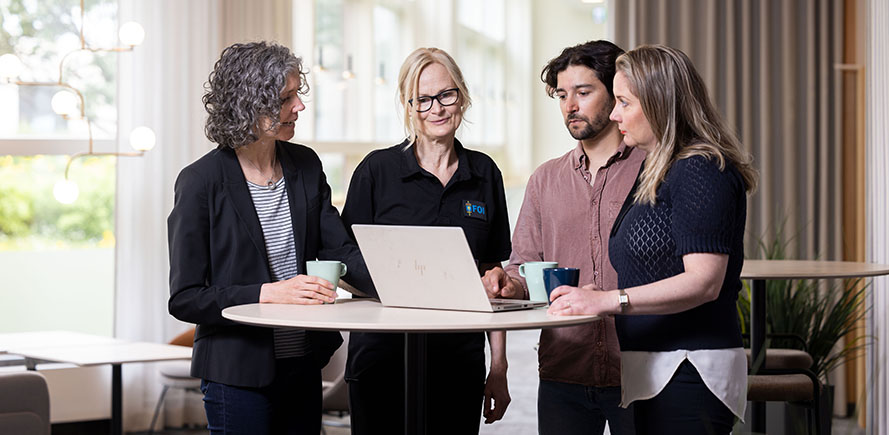How is FOI financed
FOI’s activities are financed both through commissions and appropriations.

Financing through commissions means that we price and sell our services in the marketplace. The majority of the commissions are publicly-financed and from the Armed Forces, the Swedish Defence Materiel Administration and other ministries and authorities.
In 2023, 52 per cent of FOI’s total revenues were received from the Armed Forces. The commissions are often long term and involve, among other things, simulation, underwater technology, information warfare and aeronautics. For example, FOI has:
- provided expert support in the development of the Gripen system
- contributed to improvements in the ability of Swedish ships to avoid detection by foreign reconnaissance and mine systems.
The Swedish Defence Materiel Administration was responsible for 16 per cent of FOI’s revenues in 2023. One example of the assignments the authority has given us:
- development of methods for preventing electromagnetic interference in the field.
Examples of commissions that FOI has received from civil authorities:
- conduct studies and provide support within the civil defence area for the Swedish Civil Contingencies Agency (MSB)
- analysis of white powder letters for the Police.
Financing received via appropriations implies that revenues are provided by the Government, more precisely the Ministry of Defence and the Ministry for Foreign Affairs. About 19 percent of FOI’s activities are financed through appropriations and comprise several sections:
- security and defence policy and analysis
- research in the CBRN area (CBRN stands for chemical, biological, radiological, and nuclear agents)
- international activities in the area of defence materiel
- research within the Police’s field of activities
- research, investigations and other missions in security policy and disarmament.
International financing
FOI’s activities are also financed internationally, for example via EU’s framework programme for research and innovation.
